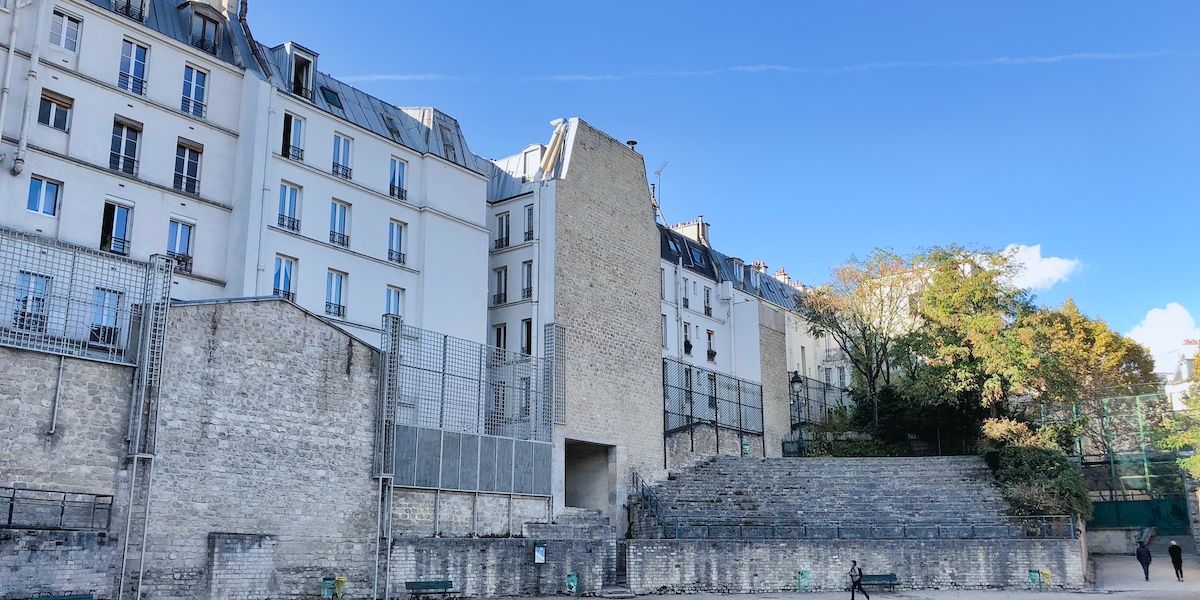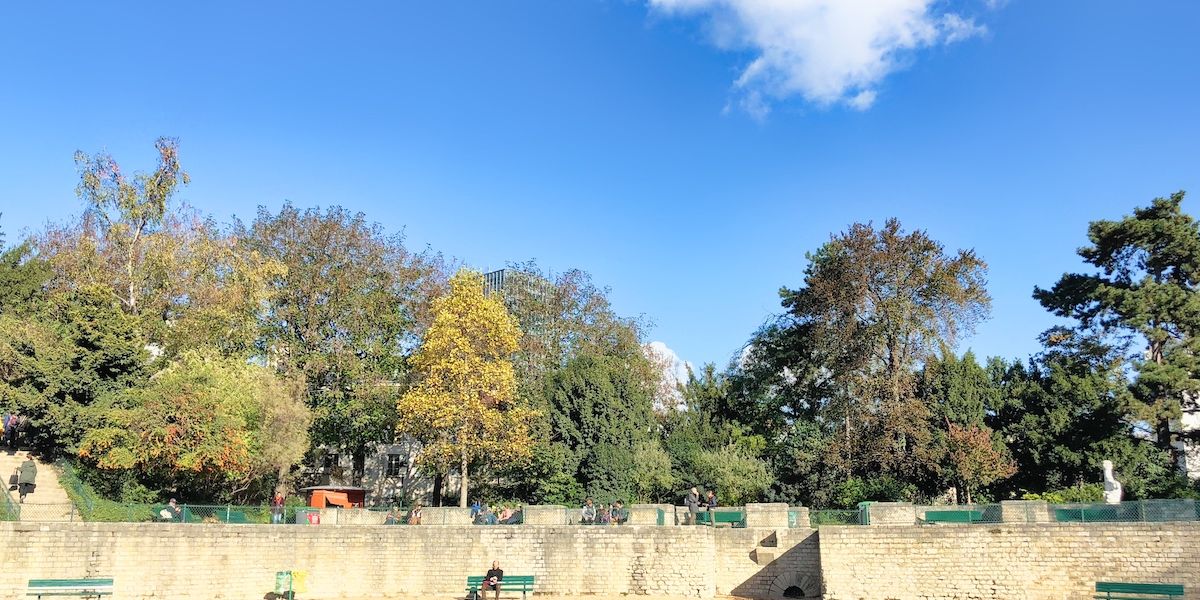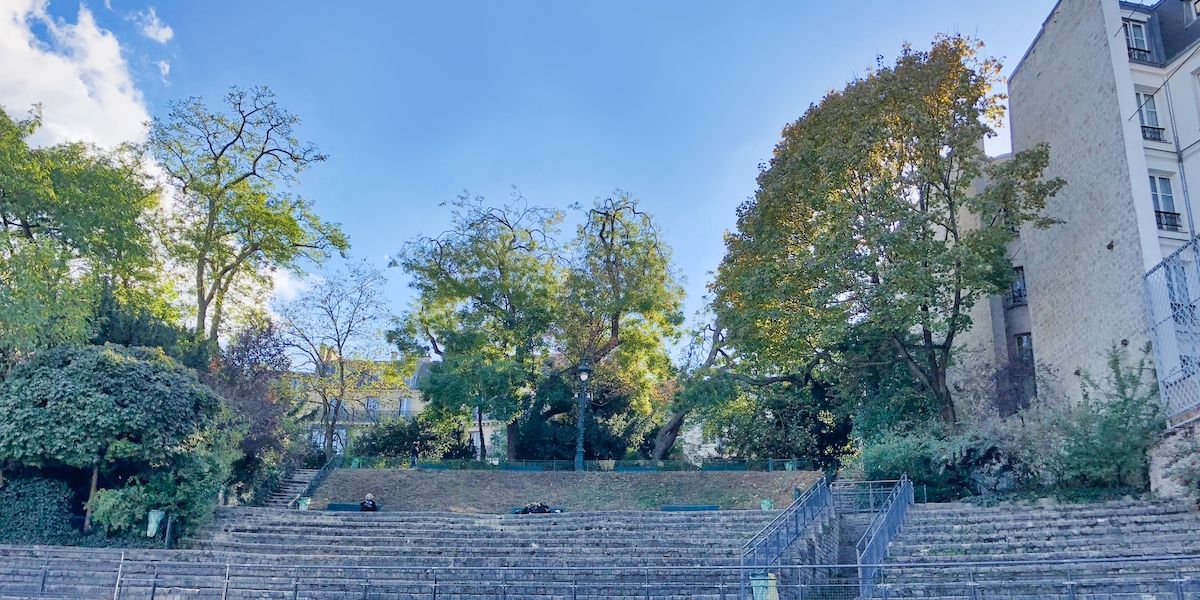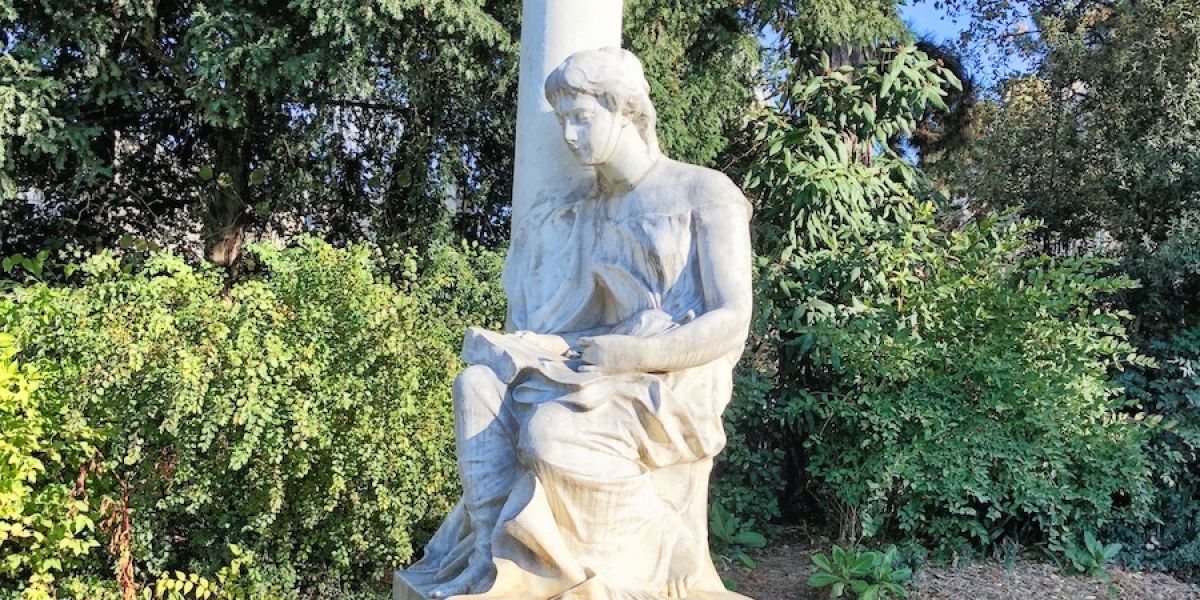The Arena of Lutetia (Fr. Arènes de Lutèce) was the Roman amphitheater of the city of Lutetia, the ancient Paris. The arena is considered the oldest surviving building in the French capital, it was built in the 1st century AD.
In Roman times, the arena on the outskirts of what was then the city held up to 17,000 people. Like most other amphitheaters, it lost its importance with the rise of Christianity, fell into disrepair and was used as a quarry, e.g. for the construction of the city walls. The amphitheater was rediscovered in 1869 when a bus depot was to be built on this site. Despite the discovery and its importance, construction work did not stop. Its preservation is largely due to Victor Hugo, who in an open letter to the city council asked for the arena to be placed under city protection, which was done shortly thereafter. The arena was not uncovered and restored until 1916, after the bus depot was demolished. Remarkable are the preserved lion cages of the arena, of which comparably little has survived in the more well-known amphitheatres.
The Arena area is now a park and is freely accessible during the day.
Photos
Map
Directions
The Lutetia Arena can be easily reached via the Place Monge station of the Métro line 7, which is just over 100 meters away. Then just follow Rue Monge north.
Address
Arènes de Lutèce
49 Rue Monge
75005 Paris
France








